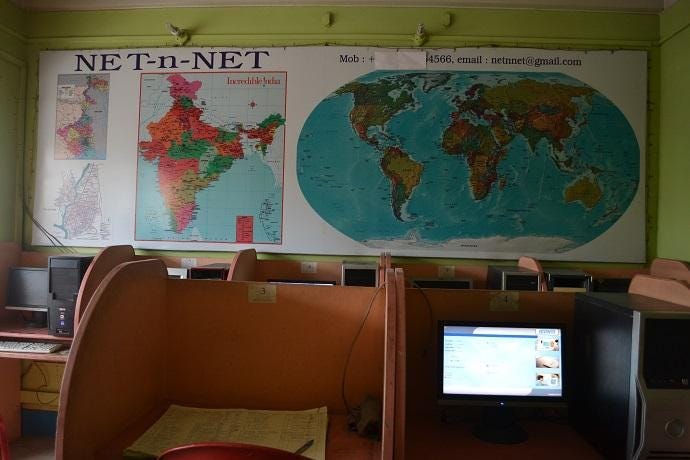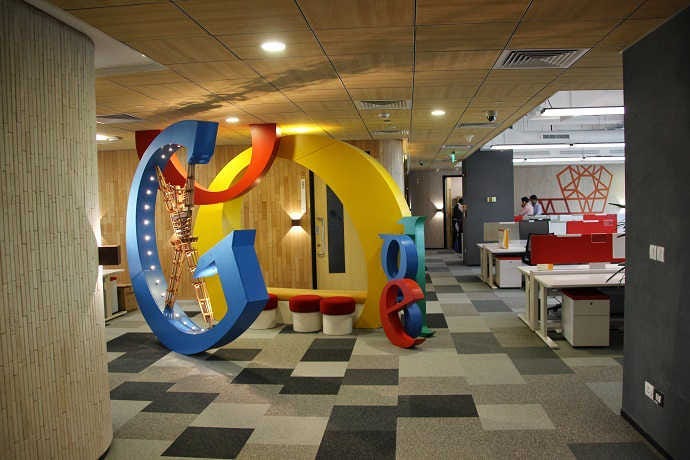The Technology of Ether: Zuckerberg in Zuckerberg’s domain
I am still sometimes struck by the casual breeziness with which celebrities seem to roam public spaces in the US. Part of this, I suppose, goes back to my growing up in India, where recognizable faces from sports or show business cannot step out without a phalanx of chelas and bodyguards, and have to be smuggled quickly through airports. But notwithstanding the clear celebrity-fetish iconised in its tabloid, television and commercial culture, Americans are able to do a good job pretending they don’t care that much when a media-kissed face floats past them in supermarkets or airports. My friends in Los Angeles often mention recognizable Hollywood faces regularly allowed to stand in security queues without much ado, just the way headline-grabbing statesmen move around Washington, D.C. to what, to Indian ears, is the deafening absence of blazing lights and a blinding lack of screeching sirens.
Americans are at least as celebrity-obsessed as Indians, with on a certain kind of celebrity-hood anyway; it is just that an embedded respect for private physical space inhibits a tangible expression of this obsession. I had blinked quite hard, just a couple of years back, when a friend, chatting between sets at one of the gyms at Stanford, had pointed out to me that the tall blonde doing her stretches on the other end of the mat was Maria Sharapova. But on hindsight I had blinked harder when I saw Sharapova — on the university campus, we realized to play at the Bank of the West tournament — do a good twenty minutes of stretches and walk out quietly with a couple of trainers, without anybody in the gym, fairly full in the late-afternoon, even appearing to bat an eyelid. They might as well have not recognized her at all — none of them — but then, even if all of them had, they would do nothing that would be recognizable beyond private actions such as whispering to their friends and exercise partners in a that would be invisible outside that private relation. Nobody, in other words, would make their reaction public.
Which is exactly why another afternoon from a few months ago stands out as odd, but oddly, also more interesting in the end. We were inside Sigona’s, the small fruits and veggies shop in the open-air Stanford shopping mall when my wife squeezed my hand in a way to register something out of the ordinary — on hindsight again a private action that wasn’t supposed to make me look up and stare, but that is exactly what I did. Shopping for fruits, Mark Zuckerberg looked rather unremarkable in person, just as his photos hinted, and his classic college-dorm apparel of hoodie and jeans deepened that amorphous ordinariness, as perhaps it was meant to. But even this time, the unremarkableness of it all struck me as rather remarkable, especially in that little store that spilled into the capacious open mall, with the swarming Sunday crowd, The Face behind Facebook gliding around picking pears, and allowed to do so without any ado at all. Or was there that slight shiver in the air, the collective impact of everybody trying hard not to notice? Global as Facebook was, perhaps the frat-boy father of social media was also something of a local cult in Silicon Valley in a way Maria Sharapova was not?
I had been a bit too quick in thinking about there being no ado at all. While Zuckerberg stood a few feet away, I saw a couple accost him. It probably stood out to me as the couple was South-Asian. It seemed that they were requesting him to do something he was refusing, nodding vigorously, the trace of a polite smile on his face. It occurred to me that they might be asking that he agree to be photographed with him. Then they parted company, but from what happened next, I think I had guessed right. While Zuckerberg was checking out his purchases and the checkout clerks were bantering among themselves as they always did, I saw the couple stand behind an aisle on the other end of the store, just getting a clear enough view so that the man could photograph the Facebook founder with his smartphone.

Was it the quick South-Asian willingness to accept the private space of a public figure as naturally public? Maybe, though there was no way of my knowing if the couple was South-Asian by birth, upbringing, or simply ancestry. The question of cultural value, however, took a backseat as my wife and I discussed the irony of the fact that the picture of Zuckerberg, literally stolen over the breadbasket, had a good likelihood of landing up on the man’s Facebook Timeline. The wheel had come full circle — put a bit brutally, Zuckerberg got what he deserved. Taking photos in the pre-Facebook era never meant what it does now — there are many, it seems, for whom events and trips are simply occasions to embellish one’s Album or Timeline. Zuckerberg would be spared the fate of being “Tagged” in that picture — after all, the photo was taken without his knowledge, and knowingly against his consent — but who was it who started this culture in the first place? When you get your little Harvard dorm-room app to be a world religion surpassing the combined population of China and India, you’ve got to watch yourself and your pears in public.
The unused garage is the classic incubatory and — again, rather unremarkable — symbol of Silicon Valley. If the finance industry on the east coast scripts its language of power in the skyscraper, northern California — where buildings refuse to rise high for fear of earthquakes — is, like Zuckerberg’s hoodie, rather unremarkable and nondescript in appearance. An aerial shot of a consortium of garages is an unimpressive affair, even when revolutionizing chips simmer inside them. No, California is not a laidback place, neither is Stanford more relaxed than its snow-covered, ivy-encrusted peers on the east coast — they only get to pretend to be because of the soft and mellow winemaking weather. But there is something genuine about that hoodie — which Zuckerberg wears in Manhattan even as Facebook makes its Initial Public Offering on Wall Street. The ethereal chip — the holy grail of Silicon Valley — defies outward signs of physical prowess, be it the phallic structure of Manhattan’s cityscape or the Dickensian skyline of Midwest’s factories. You’d be right to dismiss the merely apparent difference between the tied-and-jacketed New York hedge funder and the dot.comer in t-shirt and flip-flops, or ascribe it to the weather — but there is something real in the valley’s culture of nondescript appearance, its lack of physical markers, as it were. Nothing but the glorious redwood trees and curvy hills and the quiet beauty of the Pacific.
The garage is both a symbol and real space — from where Silicon Valley started its road trip in 1939 when Bill Hewlitt won the toss of a coin over his roommate, Dave Packard, in their Stanford dorm room to get his name first in the company brand. HP still occupies its pride of place on the iconic venture capital corridor of Sand Hill Road at the intersection of Palo Alto and Menlo Park, and half the things — buildings, movie theatres, around Stanford and Palo Alto seem endowed by H or P, one or the other. But writing in 2014, as I wait for my Stanford-ordered laptop to be shipped from China (a Lenovo as opposed to the local darling, the Mac), the valley has long, long ceased to be defined by the hard and the heavy in its digital ware. The materiality of manufacturing always belonged to the rust-corridor between Michigan and Pennsylvania — two notable blue-collar blue states — far more than it ever belonged to Silicon Valley even when it produced computer hardware, and today most hard and heavy things don’t seem made there at all.
What, then, drives the valley, and the venture capital of Sand Hill Road? It has become clear, say, from 2005 onwards, and blatantly so since the market crash of 2008, that it is such stuff as the entropy of the serendipitous, even opportunistic photography as that we witnessed in Sigona’s that Sunday afternoon, symbolically sealed, as it were, with the stamp of Zuckerberg. If the humble road trip of early Silicon Valley blazed into the information superhighway of the 1990’s paved by Google and Yahoo!, the early decades of the 21st century have floated its world voyage on things much airier, faster, and far more like an epidemic that have taken nations, social groups, and underground cults alike by storm. A long way from the iron reality of manufactured goods, they have come to possess the dark charms of clandestine photography, the exhibitionism and voyeurism of instant videos, and the affective powers of disembodied, digital friendships.
If the twentieth century was the American century, it finally seemed to be over — everywhere, except in northern California. Manufacturing left the Midwest for Asia, the Detroit auto industry pleaded bankruptcy, and the New York banks came crashing down in 2008. Five years later, in September 2013, Twitter came up with its Initial Public Offering on the NYSE and created over 1500 millionaires overnight in the Bay Area alone. Capitalism, having moved to its final western frontier, was flying on its lightest wings yet — gossip, backchat, banter — on the brevity of birdsong, 140 characters or less.
The symbolically rich infringement of Mark Zuckerberg’s privacy in a grocery shop is at once delicious and disturbing. But most crucially, it stands for the driving force behind the most recent upsurge of energy on the last frontier of the western world. Far more than steel-cut cars or planes, or even materially embodied electronic products like TV’s and entertainment systems, it is technologies of affect such as Twitter and Facebook that sheltered Palo Alto and Menlo Park in an absurd housing bubble as the rest of the nation went through a real estate crash. From being startups that teased the heady flutter of risk that had always energized venture capitalists on Sand Hill Road, the biggest of them offered IPO’s and rang the bell at NASDAQ, which, till last year, was the preferred venue for tech companies till Twitter tilted the game to favor NYSE. It isn’t southern California alone, with HOLLYWOOD emblazoned boldly across its face that traded in dreams. Much of Silicon Valley is now dotted with ethereal technologies of affect, emotion, gossip, voyeurism, exhibitionism. Having outsourced the manufacturing of the hardware of public life overseas, the hippest swathe of the valley deals in the airiest of software — idiosyncratic snatches of human life, sensibility, la vie quotidienne itself. For the very first time in history, affective and aesthetic action by mass-citizenry — not just by the designated drivers of artistic economy — has energized the stock market to such gigantic tremors.
September 2014. The Hangzhou-based e-commerce company, Alibaba went public on the NYSE, raising US$25 billion, the largest ever Initial Public Offering in history. For the last two decades, the US shipped its hard and heavy to Asia, keeping the technology of the ethereal to itself. Has the last western frontier of the western world finally been shattered?
Saikat Majumdar teaches world literature at Stanford University and is the author of a novel, Silverfish (HarperCollins, 2007), and a book of criticism, Prose of the World (Columbia UP, 2013). His new novel,set in the world of Calcutta theatre, will be published in May 2015. An early excerpt was recently published in The Kenyon Review.



